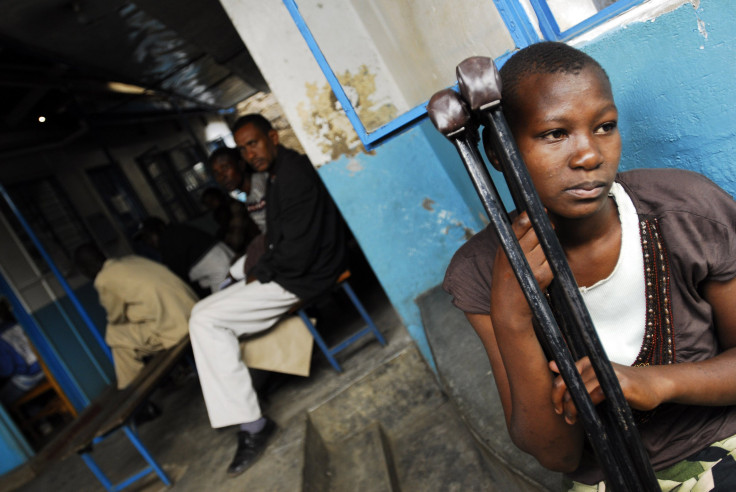On World AIDS Day, Epidemic Only Getting Worse For Young African Women

Girls living in sub-Saharan Africa are behind a staggering increase in cases of HIV infections, a recent report from UNICEF shows. The remarkably disproportionate impact on young women has raised questions about whether an ambitious new campaign to eradicate the AIDS epidemic needs to do more to ensure young people are receiving preventative services.
People around the globe marked the 26th annual World AIDS Day Monday amid a new push by the United Nations to end the epidemic by 2030. While the global health community has made strides in addressing the disease that has so far killed an estimated 35 million people, the alarming statistics about the rates of new HIV infections among Africa's adolescent female population offer a worrying reminder of the challenges that remain.
The death toll from AIDS has fallen by 30 percent around the world since 2005, but has increased by 50 percent among adolescents. In many African countries, adolescent girls are two to three times more likely to contract the disease than their male counterparts. And in Gabon, Sierra Leone and South Africa, girls now constitute more than 80 percent of new adolescent HIV infections, UNICEF’s figures indicate.
There is a significant gap in the access that health care professionals provide to younger people, said Amandine Bollinger, an HIV-specialist with UNICEF in Senegal. “Information is there for adults, it's there for mothers, but not for adolescents,” she said. “These countries just have to provide so many services that they are not necessarily paying attention to making [their educational services] adolescent friendly.”
Even limited efforts to reach young people in schools is not necessarily a successful strategy to reaching the at-risk female population given the high rates of child marriage in the region, Bollinger said. “It means that these girls can't be reached by messages that can be given to girls at schools and that they won't have access to services other teenagers might have access to," she said.
Adolescent girls often do not find out their HIV-status until they are pregnant, Bollinger said, at which point the stigmatization around a positive diagnosis often leaves them without a crucial support system. That typically leads to a financial burden that makes it very difficult to travel to and follow up with the medical treatments necessary to prevent the disease’s progression, she said.
The bigger hurdles are the systemic disadvantages that are particularly pronounced among this vulnerable population, said Abigail Harrison, a professor of behavioral and social sciences at Brown University in Rhode Island and an HIV/AIDs and reproductive health researcher. “What we really see in this population is girls who have multiple disadvantages in their lives so they can't implement the strategies needed to prevent infection,” Harrison said.
Among these hurdles are poverty and cultural views on marriage, according to Bollinger. “This is the region with the highest rate of early marriage. We have the highest number of countries with conflict, with nutrition crises, with humanitarian issues. This all has a very close relationship with HIV,” she said.
Limited economic resources often mean young girls in these countries might not be able to continue schooling, Harrison said, which in turn leaves them vulnerable economically, usually making them dependent on men -- whether through marriage or sex work.
Because of limited access to information on HIV, many of the young women who turn to sex work "just don't realize the implications of having multiple sexual partners," Bollinger said. Those who are married at a young age similarly might not have this information but, even if they do, there's the added issue that "because sexual relations are happening within a marriage context, it means girls don't use condoms," she said.
Political instability also plays a role. The sexual violence that spikes in conflict zones, including the Central African Republic which has seen major population displacements due to armed struggles, contributes to the rise in HIV infections in the region, Bollinger said. And, because the focus for many of these displaced women is simply on subsisting day to day, getting tested and treated for HIV unfortunately ends up becoming "not a priority," she said.
Many of these broader forces ultimately mean young women in these countries have very little agency over their lives, Bollinger said. This is part of the reason the U.N.'s pledge to end AIDS by 2030 may be a challenge. "It is a really ambitious goal," Harrison said. Which is why the global health community needs to employ "creative strategies" to reach the most vulnerable populations.
Community-focused initiatives like Grassroots Soccer, which works at the local level to raise HIV/AIDS awareness among young people and has recently developed a program for young girls specifically, can begin the process of reaching at-risk youth, Harrison said. “But it is important to remember that it's not going to be one single thing that solves this problem.”
© Copyright IBTimes 2024. All rights reserved.





















